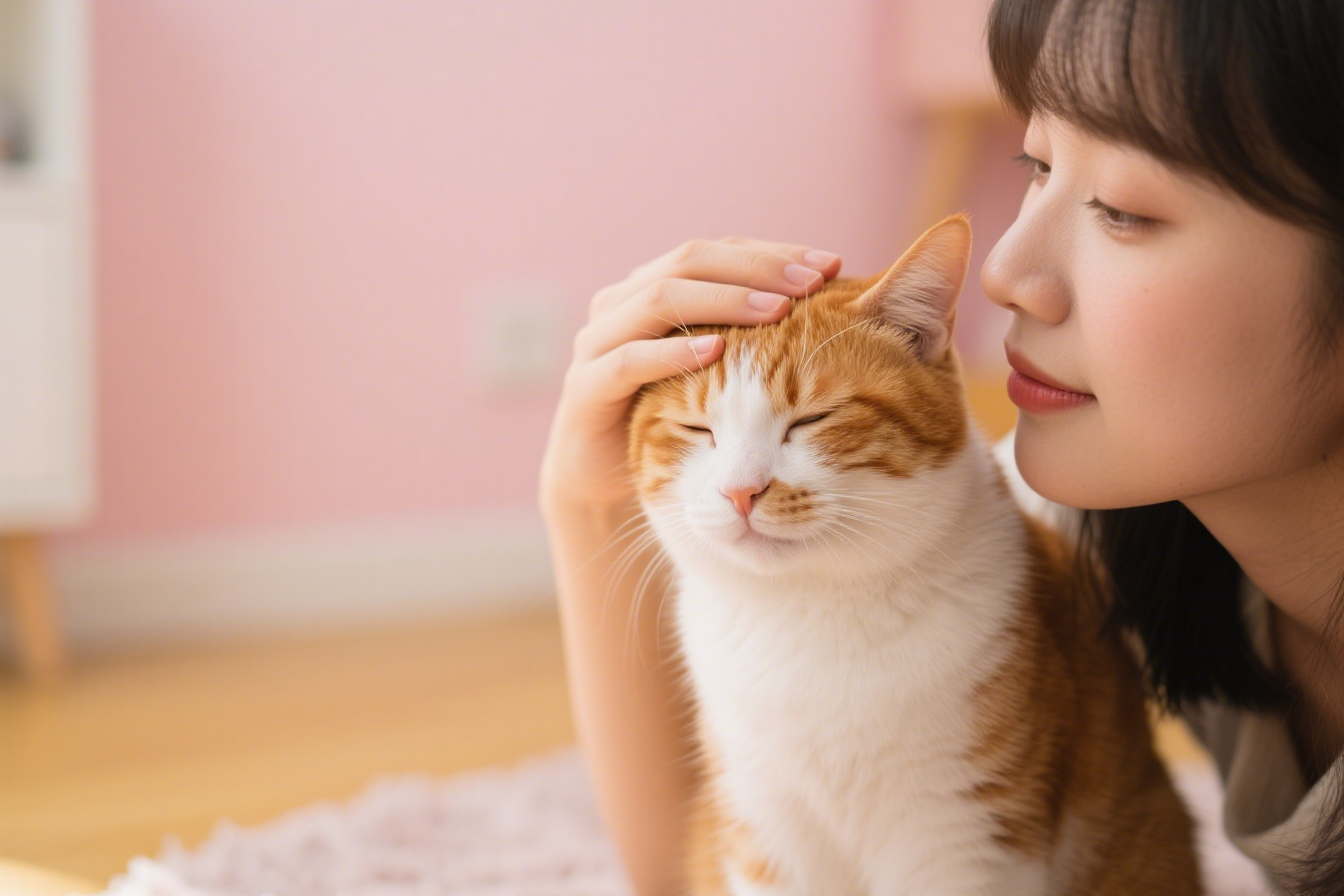Ever found yourself sitting quietly on the couch, only to have your feline friend approach, lower their head, and press it firmly but gently against you? This heartwarming gesture, often mistaken for a simple “headbutt,” is one of the most profound signals of trust and affection in the feline world. If you’ve ever asked yourself, “why does my cat headbutt me?”, you’re about to discover that it’s so much more than a quirky habit. It’s a deliberate, meaningful social ritual known as bunting.
When your cat rubs its head on you, it’s communicating a complex message of love, ownership, and social belonging. Let’s delve into the beautiful science and sentiment behind this special behavior.

Table of Contents
What Exactly Is Cat Bunting?
First, let’s clarify the term. While many owners call it a headbutt, “bunting” is the more accurate description. It’s a gentle, intentional act where a cat presses and rubs its head against another creature (you, another cat, or even the family dog) or an object. The key difference is the intent: a true headbutt can be a more forceful, aggressive gesture, whereas bunting is slow, soft, and purely affectionate.
The cat bunting meaning is rooted in communication. Cats use their heads as a primary tool to engage with their environment, and you are a central, beloved part of that environment. They will typically use their forehead, cheeks, and chin—the very areas where their most important scent glands are concentrated.
The Science of Scent: It’s All About Pheromones
To truly understand why your cat bunts you, we need to talk about chemistry. A cat’s head is rich with scent glands that produce chemicals called pheromones. These aren’t just ordinary scents; they are powerful chemical messengers that convey complex information to other cats.
Think of it like this: when a cat rubs its head on you, it’s essentially leaving behind a tiny, invisible “business card” that says, “This person is safe, familiar, and part of my family.” These glands are located in several key areas:
- Cheeks: Used for friendly greetings and marking safe territory.
- Forehead and Lips: Also crucial for social bonding.
- Chin: Another prime spot for leaving reassuring scents.
By depositing these pheromones on you, your cat is effectively weaving its own scent into your personal tapestry, creating a single, harmonious group scent. This act turns you from a separate individual into an integral part of their colony.
The Three Core Meanings Behind a Head Bunt
So, what is your cat really saying when it bunts you? It’s usually a combination of these three powerful messages.
1. A Mark of Deep Affection and Trust
This is the most straightforward interpretation. A cat will only engage in bunting with individuals it trusts implicitly. By pressing its head against you, it’s making itself vulnerable. This is the feline equivalent of a warm hug or a trusting lean on a shoulder. It’s a clear signal that you are considered a source of comfort and security.
2. Creating a Shared “Colony Scent”
Cats in a social group (a colony) create a unified group scent by rubbing against each other. This communal smell helps them quickly identify who belongs to their “family” and who is an outsider. When your cat bunts you, it’s performing this vital social ritual. It’s mixing its scent with yours, proudly proclaiming, “You are mine, and I am yours. We belong together.” This is a profound act of social inclusion.
3. A Respectful Social Greeting
In the feline world, bunting is also a polite form of greeting. You might notice your cat bunting your leg when you come home from work or bunting your face to wake you up in the morning. This is their way of saying a friendly “Hello, I’m glad you’re here” or “Good morning, my trusted companion.” It reaffirms your bond after a period of separation, no matter how short.
How Should You Respond to a Cat Bunt?
Receiving a bunt is an honor, so responding appropriately can further strengthen your bond.
- Don’t force it: Always let your cat initiate the interaction.
- Receive it calmly: Stand or sit still and allow them to complete their affectionate gesture.
- Respond with gentle pets: The best response is to gently stroke their head, neck, and back. A soft scratch under the chin or on the cheeks is often especially appreciated, as you’re helping them stimulate those very scent glands.
- Speak softly: Use a warm, reassuring tone to acknowledge their gesture.
It’s a moment of pure connection, so simply being present and receptive is the most important thing you can do.
A Sign of a Strong Bond
Ultimately, the answer to “why does my cat headbutt me?” is simple: it’s a testament to the beautiful, trusting relationship you’ve built. This gesture is not a random quirk but a deliberate, scientifically-backed display of love and social connection. So the next time your cat offers you its head, cherish the moment. You are not just being headbutted; you are being chosen, marked, and loved in one of the most authentic ways a cat knows how.